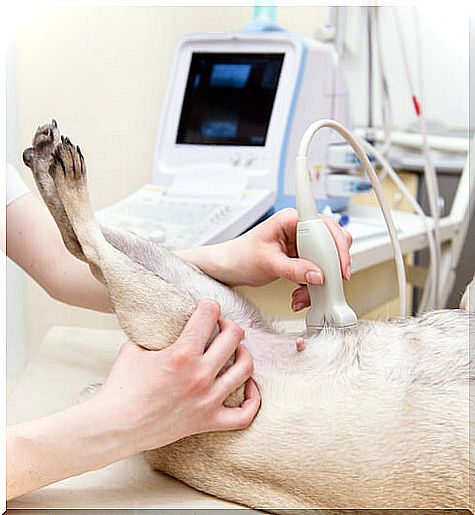Bleeding Symptoms In Dogs

When we decide to adopt a pet, we have to be very sure of the decision, since in addition to our care and attention, we also have to take care of the animal’s health. We have to take them to the vet regularly, even if they don’t show symptoms of any disease.
That’s why in this article we will talk about bleeding in dogs, symptoms that may indicate that our friend has this problem. We’ll show you a series of tips and recommendations for you to detect and know the symptoms of bleeding.
Causes of bleeding in dogs
The causes can be varied, although the main one is due to severe trauma. Certain hemorrhages can be caused by a hematoma or, in the worst case, a tumor.
by an accident or trauma
If your dog has an accident, the impact can be so great that he can die instantly from heavy bleeding. But in other cases, the bleeding may be internal, mainly due to damage to the liver or spleen, two organs that can be affected. That’s why if your dog has an accident, take him to a veterinarian immediately, even if he doesn’t show signs of injury.
Abdominal hematoma
Blood can accumulate inside the animal’s abdomen, causing bruises. These bruises are caused by the rupture of blood vessels attached to the spleen. This is due to minor trauma and is not very visible, being difficult to detect.
by a tumor
Another cause of bleeding is a tumor, especially in the blood vessels. Most of these tumors are malignant and somewhat aggressive, with the German Shepherd and Golden Retriever being the breeds most likely to suffer from this type of disease.
coagulopathy
Coagulopathy or hemorrhagic disorder is an alteration of the coagulation system, causing it to work incorrectly. This disorder causes changes in blood vessels and is characterized by irregular bleeding, the animal does not clot properly.
bleeding symptoms

It is very important to always be aware of changes in your dog’s behavior, if he is suddenly very tired or doesn’t feel like playing anymore. Also, pay attention to other changes in your body.
Bleeding from one of your orifices
We have to look for blood in the dog’s urine or feces, as rectal bleeding is very common in dogs. However, also note if there is any bleeding in the nose or even in the ears. If there is damage to the mouth, throat, or lungs, your dog may vomit blood.
low body temperature
You have to take your dog’s body temperature from time to time. The average body temperature of a dog is 37.7°C to 39.1°C, if the temperature is below 37°C it is a symptom that your dog is sick.
white gums
If your dog’s gums are pink, it’s a sign of good health, but if they’re white or pale, it’s possible that there is some internal bleeding.
Breathing and tiredness
Notice if your dog breathes or wheezes in a sudden way, for no apparent reason. If you’ve noticed a change in your breathing rhythm, it’s a sign that something isn’t right.
If your dog is restless, playful and likes to run around, but suddenly doesn’t want to go out, play, or welcome you in a euphoric way, it could also mean some internal bleeding that you haven’t noticed.
How to treat bleeding in dogs?

Even if you don’t believe it, internal bleeding is more common than you think, but it also tends to go away without problems unless the reason is something serious. Treatment will depend on the cause of the bleeding.
It is very important to take your pet to the vet as soon as you notice some of the signs mentioned above. He will certainly undergo some tests, such as: endoscopy, blood test or stool analysis. But don’t be alarmed, as this serves to rule out other problems.
Don’t let your dog eat bones, as these can cause constipation and further bleeding. Also, watch your diet and do not give leftovers to the dog, your pet must follow a balanced diet to avoid canine constipation.









